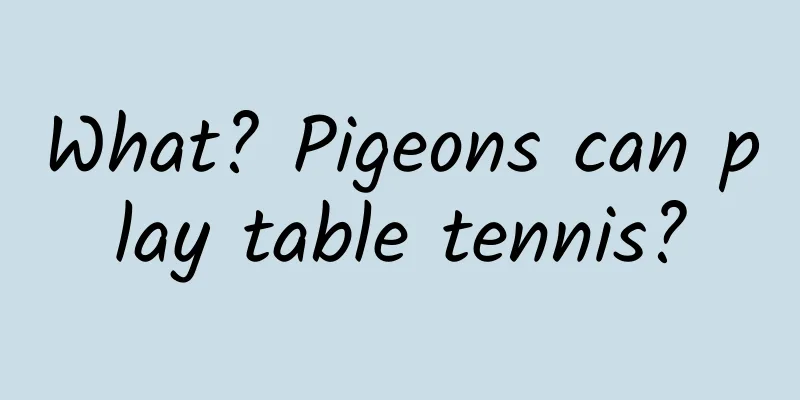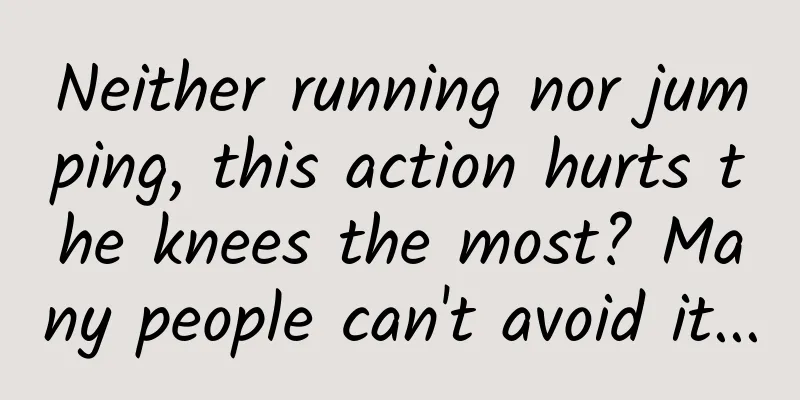What? Pigeons can play table tennis?

|
Pigeons are a symbol of peace and " keeping one's word ". However, one scientist wants to give them more skills, such as teaching them to play table tennis or even letting them operate missiles in war. Meat pigeons, homing pigeons, and ornamental pigeons are all domesticated from the original pigeon (Columba livia) | Diego Delso / wikipedia Almost died a heroic death, goo During World War II, the famous psychologist Burrhus Frederic Skinner proposed to the US military to use pigeons to control missiles. Behavioral Psychology Master - Skinner | Silly rabbit / wikipedia It's easy to say that a pigeon can fire a missile: According to Skinner's design, an empty cabin is placed in the missile, and the pigeon is placed in the cabin with a small display screen in front of it. The bombing target will be displayed on the screen as a small dot. The trained pigeon will peck at this small dot non-stop. The metal conductor on its mouth will continuously correct the flight direction of the missile based on the information conveyed by the pigeon's pecking on the screen, so that it can reach the target directly, boom! Of course, after the bombing was successful, the pigeons died heroically . "What do you mean you still want to start production?" | Eatcha / wikimedia After training, pigeons are good at pecking at screens. However, the "pigeon missile" was never put into production. As radio control technology improved, this strange idea was forgotten. Skinner was disappointed that no one wanted to take his invention seriously, but his pigeons still went down in the history of psychology . Teaching pigeons to play table tennis Skinner was a behaviorist psychologist. Due to technical limitations, people were unable to study brain activity at the time, so this school of thought focused on visible and tangible behavior. Skinner's greatest contribution to behaviorism was his development of a "pigeon control method" for manipulating animal behavior. He could control pigeons, mice, and humans. Skinner's method is simple, but it uses both "carrots" and "sticks" to control animals to learn step by step and complete the tasks he gave them. He called the "carrot" "Positive Reinforcement" and the avoidance of being beaten with the "stick" "Negative Reinforcement". How these two things are given determines what the animal will do. Skinner using a Skinner box to train rat behavior | U3144362 / wikipedia He built a machine to teach animals to complete tasks: the Skinner box. There is a lever in the box. When you press the lever, a pellet of feed falls out. Skinner puts pigeons in the box. If the pigeons accidentally peck the lever, they can eat the feed. This is a positive reinforcement. Over time, the pigeons will take the initiative to peck the lever. Skinner box for training pigeons | Mark E. Bouton from University of Vermont / Wikipedia The Skinner box itself is very simple, but using this principle, animals can be trained to complete quite complex tasks. Skinner's most famous "stunt" is teaching pigeons to play table tennis . His training method is as follows: Give the pigeon a fixed ping-pong ball, and if it pecks the ball, give it a food reward. After the pigeon develops the habit, the ball is replaced with a movable one, and a machine is installed on a small platform (the pigeon's "table"); if the pigeon pecks the ball, the ball rolls up a distance, triggering a switch, and food will fall out. In this way, the pigeon learns to push the ball up. Skinner gradually moves the machine away, allowing the pigeon to push the ball a longer distance. In the end, the pigeon can only get a reward if it pushes the ball to the other side of the table. Finally, put the two pigeons that have learned to push the ball on both sides of the same platform and give them a ping-pong ball. No matter which way the ball rolls, the pigeons will push the ball back. The game is quite lively. Pigeons playing table tennis | Bfskinnerfoundation / youtube In order to get the reward in their hearts, both pigeons stare at the ball intently, ready to adjust their positions at any time. Sometimes it takes five or six rounds before one of them pushes the ball out of the table and "scores". The winner of a table tennis match will receive a reward from the machine | Bfskinnerfoundation / youtube From teaching machine to "plaything that makes you lose your ambition" Skinner was obviously not satisfied with teaching pigeons to "play table tennis". He wanted to apply this training method to more valuable places. Skinner designed a teaching machine for students and even wrote a novel "Walden Two" to promote his educational philosophy, using positive reinforcement and negative reinforcement to "knead and flatten" children at will and shape them into people who are useful to society. Skinner's book The Second Walden | BF Skinner / Macmillan / wikipedia Getting a delicious treat as a reward for getting full marks is "positive reinforcement", while getting full marks but not being beaten with a broom is "negative reinforcement". Skinner's ideas are inevitably limited , but his influence is still far-reaching. Not only in teaching, but other fields are also using Skinner's principles to design "human Skinner boxes". By setting up tasks step by step and arranging appropriate positive reinforcement (rewards) and negative reinforcement (freedom from punishment) to guide people's behavior, among the things we are familiar with, the most in line with this concept is games. When training animals, Skinner discovered an interesting phenomenon: the more rewards animals receive, the more work they do. If the Skinner box is designed so that the pigeons are given food every time they peck at the lever, they will soon get bored; but if they peck many times before being given food occasionally, the pigeons will enjoy it and will peck non-stop, never letting you down. Similarly, game designers will deliberately increase the rarity of some things so that we will stay up late and work hard to get rare equipment, SSR cards, shiny elves, etc. by spending money to draw cards. Wow! Gold... normal | Zaid Sparrow / wikimedia Metaphysics and Koi Another discovery made by Skinner is even more intriguing. He set up the Skinner box to feed the pigeons at a fixed time and without any external influence. As a result, the pigeons in the box underwent unexpected changes. They performed various strange behaviors in an attempt to "summon" the food: some pigeons spun like tops, some pointed their heads at a corner of the box, and some pigeons moved their heads and bodies back and forth as if dancing. The reason is actually this. At first, the pigeon just turned around by chance, and the food happened to fall out at this time, which became a "positive reinforcement" to encourage the pigeon to turn around. Over time, the pigeon learned to turn around continuously. The pigeon's "dance steps" will also change over time, because it will always make new movements in the box, and the constantly falling feed will become a "reward" for the new behavior. Of course, no matter how the pigeons try their best, there won't be a little more feed. Skinner called this phenomenon the pigeons' "superstition." "Waiting for Tony Leung Chiu Wai, goo." | Augustus Binu / wikimedia In the game world, the random dropping of "feed" has also led us to invent all kinds of "metaphysics". For example, some people believe that SSR cards can be obtained by opening packs and drawing cards at an "auspicious time", some believe that SSR cards can be obtained by "absorbing luck" from lucky people, and some hope to help an old lady cross the road... These are essentially the same as dancing pigeons. Other aspects of "metaphysics" are even more colorful. Popular science writer Richard Dawkins recounted a story from Las Vegas: After each bet, a gambler would run to a floor tile in the casino and stand on one leg to wait for the opening; if someone stayed in that position, he would be furious. Apparently, he had won money on this floor tile before, so this floor tile became a place for him to absorb "lucky energy". For the same reason, many athletes have small superstitions to "bless winning", such as "eat the breakfast I had when I won last time." Some superstitious people believe black cats represent good luck, others believe they represent bad luck | Manfred Werner / wikipedia However, in front of "koi", these superstitions can only be regarded as minor. In October 2018, a WeChat public account article suddenly became popular. The author claimed that he was a human-shaped koi, and those who gave the author a tip would receive her good luck. As a result, tens of thousands of people paid the IQ tax for koi. The story of the "koi fish" is worrying, not just because the money of the "ignorant masses" is too easy to be cheated. After Skinner cut off the supply of food, the pigeons in the Skinner box would still repeat the action of "calling for food". After tens of thousands of futile attempts, its "superstition" would be shaken. How long will human superstition last? Just because a cat can't catch you this time doesn't mean it can't catch you next time | pexels Author: Red Queen This article comes from GuokrNature (ID: GuokrNature) |
<<: New efficacy of artemisinin, promising for treating this common disease
Recommend
The "rice popcorn" that the birds in the trees love to eat, don't try it blindly|Expo Daily
The sky is crowed and the rice flowers are bloomi...
6 Keyword Bidding Rules, Will You Still Worry About Lack of Traffic After Learning Them?
To put it simply, bidding means spending money to...
A detailed explanation of shared power banks (with operation strategies)
The author of this article conducted a market ana...
Why does cutting an onion make you cry? It's not because of the lyrics "peeling off my heart layer by layer"...
Onions are a vegetable that we often see in our d...
Are there dragons in your hometown? Maybe there are no dragons in the world...
There are no dragons in this world. Because the C...
How to do viral marketing well? 3 types and 4 elements you must know
Viral marketing is a very effective way to achiev...
How beautiful are China's karst landforms? -- Karstologist and Chinese Academy of Sciences member Yuan Daoxian
Every year at the beginning of the school year, t...
Why do we sleep with our phones?
Think about this morning. Did you reach for your p...
A shocking global volcanic eruption! The "pain" and "love" of Mount St. Helens
If you ask which volcano in the United States is ...
Attention: taking medicine before meals and taking medicine on an empty stomach are not the same thing!
When people eat grains, it is inevitable that the...
5,000 words of in-depth information to reveal the secrets of offline event promotion!
When it comes to organizing events, it is a love-...
Want to do a marketing activity but don’t know how to write a plan? Check out this article!
Many people always feel like they don’t know wher...
The ancient zither is present in paintings from the Song and Yuan dynasties, and the taste of the zither is pure joy (Part 2)
The ancient zither is present in paintings from t...









